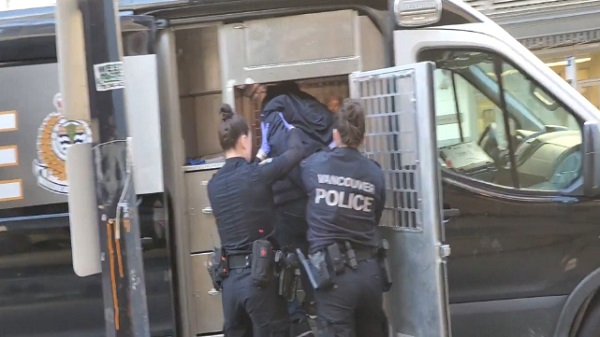News
ASIRT report released on incident which left Const. Dan Woodall dead

On June 8, 2015, pursuant to section 46.1 of the Police Act, the Alberta Serious Incident Response Team (ASIRT) was directed to investigate the circumstances surrounding the death of Norman Walter Raddatz following an incident involving the Edmonton Police Service (EPS) and the attempted execution of an arrest warrant that resulted in the death of one officer, Const. Daniel Woodall, and the serious injury of another officer.
When a person dies in the custody of police, ASIRT might be directed to investigate whether police conduct caused or contributed to the death of a person, and if so, whether the police conduct was lawful. In cases such as this, when police have surrounded a residence with the intent to apprehend someone inside, that is considered an “in custody” event as the subject is contained and his or her movements are controlled such that he or she is not free to exit the residence and leave the area. That was the situation on June 8, 2015 with Norman Raddatz.
At the time of this incident, Raddatz was 42 years old, divorced and living alone in his house in the west end of Edmonton. He had no criminal record but for a single conviction in 1991 for an impaired driving-related offence. He had continuing disputes with bylaw enforcement regarding the parking of a recreational vehicle and the maintenance of his property, and had six convictions for bylaw offences in the preceding three months.
In April 2015, EPS received a complaint from an Edmonton man that Raddatz had been posting anti-Semitic comments and hate-filled messages online. The complainant and Raddatz had been friends but the relationship deteriorated in 2012 after Raddatz found out that the complainant was Jewish and also as a result of a dispute over money. The complainant feared for his safety, particularly if Raddatz had been drinking.
In addition to the online activity in relation to the complainant, Raddatz also frequently conveyed anti-banking institution and anti-bylaw enforcement/government messages.
After an investigation, police felt there was sufficient evidence to charge Raddatz with criminal harassment in relation to the continued online messaging. An outstanding warrant for a bylaw offence was also located. On June 8, 2015, EPS officers went to Raddatz’s home to place him under arrest.
They arrived on scene and knocked on the door of the home. Raddatz came to the front door but refused to open it to speak with police. EPS members identified themselves as police officers and advised Raddatz that they were there for a serious matter and would like to speak with him. They advised him that they needed to speak with him, that he was going to be placed under arrest for criminal harassment but that they were going to release him on a document called a Promise to Appear, meaning that it was not their intention to hold him in custody. Raddatz refused to open the door, prompting officers to tell Raddatz that they would get a warrant to enter and arrest him, if necessary. Raddatz responded, ”Go get a warrant, I’m not opening the door.” At the time, Raddatz appeared sober and calm — albeit uncooperative.
Although it took a little over one hour, the involved officers ultimately obtained the necessary warrant to enter the home to make the arrest.
During the time that the warrant was being obtained, Raddatz was speaking with the officers and observed through windows to be walking throughout the residence. His behaviour didn’t raise any concerns at the time and Raddatz didn’t make any threatening comments that suggested he would become violent. Raddatz told officers to leave his property until they had a warrant.
Once officers obtained the warrant, they went to a window and showed Raddatz the actual document, in the hope that he would surrender without the necessity of a forcible entry into the home. There was a conversation about the warrant as Raddatz could not see where it referred to criminal harassment and the document was explained to him. Raddatz chose not to open the door and/or surrender, even after being advised that police would forcibly enter the home if he did not comply. He replied with an expletive, “This is _____,” and walked away, out of view, immediately before the officers proceeded to attempt entry.
Four officers were standing at the front door when they tried entering the home using a battering ram. The door was struck three times and almost contemporaneous with the third strike, Raddatz fired shots through the front door, striking two of the four officers. Both officers were wearing their police-issued body armour. One officer sustained a single gunshot wound to the lower torso while the second officer, Const. Dan Woodall, sustained fatal injuries as a result of multiple gunshot wounds. Raddatz continued to fire at officers positioned outside the residence for an extended period of time. Many of those shots penetrated nearby vehicles and residences.
Not a single shot was fired by any member of the Edmonton Police Service. This was confirmed by all the evidence, including that of civilian witnesses in the area. At no time did any of the officers have a safe opportunity to do so, as they never actually saw Raddatz again after their conversation with him through the window.
During the ensuing standoff, Raddatz continued to fire shots from his residence. After some time, smoke was seen coming from inside the home. It became apparent that a fire had started within the home. Officers had no way of knowing where Raddatz was within the home, making it impossible to ensure safe entry to secure him without unreasonable risk to the lives and safety of others. Officers and firefighters were left with the only option to wait. Given Raddatz’s continuing unrestrained, uncontrolled and unpredictable shooting from inside the home, it was not possible for firefighters to even approach to try to control or put out the fire without placing themselves at imminent risk of death or serious bodily harm.
In these circumstances, the fire ultimately consumed the entire home without police and first responders having any idea of Raddatz’s location, or what had taken place inside the residence.The residence was safely entered the next day by Edmonton Fire personnel, police and ASIRT investigators who were on scene.
Once entry was made, evidence of a homemade bomb was located in what was believed to have been a front closet. The remains of a dog were found in the kitchen area. The dog had been shot. Raddatz’s remains were recovered in an area of the house that was believed to have been a bedroom. Parts of multiple firearms that survived the fire were located within the residence, including one found in close proximity to where the remains were located.
An autopsy conducted by the Office of the Chief Medical Examiner determined that Raddatz died of a self-inflicted gunshot wound to his head. Additionally, the autopsy found no soot in his airway, which would suggest that he died prior to fire overtaking the area he was in and, as such, the fire played no role in his death.
Examining the conduct of the involved police officers, it is beyond question that all the officers were lawfully placed and engaged in the lawful execution of their duties. Having obtained the warrant, they had the lawful authority to enter the home and arrest Raddatz. Nothing they did in their attempt to do so exceeded their lawful authority or was unreasonable. There is no evidence or even reasonable suspicion to believe that the officers did anything wrong that day that caused or contributed to the death of Raddatz.
Words will never fully express the magnitude of the tragedy on this day and the countless lives that were impacted and changed. ASIRT extends its condolences to the Raddatz family, as Norman Raddatz’s actions were his own, not those of his family members, who were among those left devastated by his actions.
Our sincere condolences are also extended to the family of Const. Daniel Woodall in their senseless and unimaginable loss of a husband, father and son. They have shown considerable grace and strength throughout this time. Our hearts go out to all the involved officers that day and their families during this unspeakably horrific event and its aftermath, the Edmonton Police Service as a whole, and to the Alberta policing community. This case is a stark reminder of the potential risks law enforcement face everyday as they work to keep our communities safe.
Media
CBC journalist quits, accuses outlet of anti-Conservative bias and censorship

From LifeSiteNews
Travis Dhanraj accused CBC of pushing a ‘radical political agenda,’ and his lawyer said that the network opposed him hosting ‘Conservative voices’ on his show.
CBC journalist Travis Dhanraj has resigned from his position, while accusing the outlet of anti-Conservative bias and ”performative diversity.”
In a July 7 letter sent to colleagues and obtained by various media outlets, Travis Dhanraj announced his departure from the Canadian Broadcasting Corporation (CBC) due to concerns over censorship.
“I am stepping down not by choice, but because the Canadian Broadcasting Corporation has made it impossible for me to continue my work with integrity,” he wrote.
“After years of service — most recently as the host of Canada Tonight: With Travis Dhanraj — I have been systematically sidelined, retaliated against, and denied the editorial access and institutional support necessary to fulfill my public service role,” he declared.
Dhanraj, who worked as a CBC host and reporter for nearly a decade, revealed that the outlet perpetuated a toxic work environment, where speaking out against the approved narrative led to severe consequences.
Dhanraj accused CBC of having a “radical political agenda” that stifled fair reporting. Additionally, his lawyer, Kathryn Marshall, revealed that CBC disapproved of him booking “Conservative voices” on his show.
While CBC hails itself as a leader in “diversity” and supporting minority groups, according to Dhanraj, it’s all a facade.
“What happens behind the scenes at CBC too often contradicts what’s shown to the public,” he revealed.
In April 2024, Dhanraj, then host of CBC’s Canada Tonight, posted on X that his show had requested an interview with then-CBC President Catherine Tait to discuss new federal budget funding for the public broadcaster, but she declined.
At a time when the public broadcaster is under increasing scrutiny and when transparency is needed, #CanadaTonight requested an intvu w/ @PresidentCBCRC Catherine Tait. We wanted to discuss new budget funding, what it means for jobs & the corporation’s strategic priorities ahead.…
— Travis Dhanraj (@Travisdhanraj) April 19, 2024
“Internal booking and editorial protocols were weaponized to create structural barriers for some while empowering others—particularly a small circle of senior Ottawa-based journalists,” he explained.
According to Marshall, CBC launched an investigation into the X post, viewing it as critical of Tait’s decision to defend executive bonuses while the broadcaster was cutting frontline jobs. Dhanraj was also taken off air for a time.
Dhanraj revealed that in July 2024 he was “presented with (a non-disclosure agreement) tied to an investigation about a tweet about then CBC President Catherine Tait. It was designed not to protect privacy, but to sign away my voice. When I refused, I was further marginalized.”
Following the release of his letter, Dhanraj published a link on X to a Google form to gather support from Canadians.
“When the time is right, I’ll pull the curtain back,” he wrote on the form. “I’ll share everything…. I’ll tell you what is really happening inside the walls of your CBC.”
Click here to read a note directly from me:https://t.co/FYncgnOZ1E pic.twitter.com/OFaLi2OGkn
— Travis Dhanraj (@Travisdhanraj) July 7, 2025
CBC has issued a statement denying Dhanraj’s claims, with CBC spokesperson Kerry Kelly stating that the Crown corporation “categorically rejects” his statement.
This is hardly the first time that CBC has been accused of editorial bias. Notably, the outlet receives the vast majority of its funding from the Liberal government.
This January, the watchdog for the CBC ruled that the state-funded outlet expressed a “blatant lack of balance” in its covering of a Catholic school trustee who opposed the LGBT agenda being foisted on children.
There have also been multiple instances of the outlet pushing what appears to be ideological content, including the creation of pro-LGBT material for kids, tacitly endorsing the gender mutilation of children, promoting euthanasia, and even seeming to justify the burning of mostly Catholic churches throughout the country.
International
CBS settles with Trump over doctored 60 Minutes Harris interview

CBS will pay Donald Trump more than $30 million to settle a lawsuit over a 2024 60 Minutes interview with Kamala Harris. The deal also includes a new rule requiring unedited transcripts of future candidate interviews.
Key Details:
- Trump will receive $16 million immediately to cover legal costs, with remaining funds earmarked for pro-conservative messaging and future causes, including his presidential library.
- CBS agreed to release full, unedited transcripts of all future presidential candidate interviews—a policy insiders are calling the “Trump Rule.”
- Trump’s lawsuit accused CBS of deceptively editing a 60 Minutes interview with Harris in 2024 to protect her ahead of the election; the FCC later obtained the full transcript after a complaint was filed.
Tonight, on a 60 Minutes election special, Vice President Kamala Harris shares her plan to strengthen the economy by investing in small businesses and the middle class. Bill Whitaker asks how she’ll fund it and get it through Congress. https://t.co/3Kyw3hgBzr pic.twitter.com/HdAmz0Zpxa
— 60 Minutes (@60Minutes) October 7, 2024
Diving Deeper:
CBS and Paramount Global have agreed to pay President Donald Trump more than $30 million to settle a lawsuit over a 2024 60 Minutes interview with then–Vice President Kamala Harris, Fox News Digital reported Tuesday. Trump accused the network of election interference, saying CBS selectively edited Harris to shield her from backlash in the final stretch of the campaign.
The settlement includes a $16 million upfront payment to cover legal expenses and other discretionary uses, including funding for Trump’s future presidential library. Additional funds—expected to push the total package well above $30 million—will support conservative-aligned messaging such as advertisements and public service announcements.
As part of the deal, CBS also agreed to a new editorial policy mandating the public release of full, unedited transcripts of any future interviews with presidential candidates. The internal nickname for the new rule is reportedly the “Trump Rule.”
Trump initially sought $20 billion in damages, citing a Face the Nation preview that aired Harris’s rambling response to a question about Israeli Prime Minister Benjamin Netanyahu. That portion of the interview was widely mocked. A more polished answer was aired separately during a primetime 60 Minutes special, prompting allegations that CBS intentionally split Harris’s answer to minimize political fallout.
The FCC later ordered CBS to release the full transcript and raw footage after a complaint was filed. The materials confirmed that both versions came from the same response—cut in half across different broadcasts.
CBS denied wrongdoing but the fallout rocked the network. 60 Minutes executive producer Bill Owens resigned in April after losing control over editorial decisions. CBS News President Wendy McMahon also stepped down in May, saying the company’s direction no longer aligned with her own.
Several CBS veterans strongly opposed any settlement. “The unanimous view at 60 Minutes is that there should be no settlement, and no money paid, because the lawsuit is complete bulls***,” one producer told Fox News Digital. Correspondent Scott Pelley had warned that settling would be “very damaging” to the network’s reputation.
The final agreement includes no admission of guilt and no direct personal payment to Trump—but it locks in a substantial cash payout and forces a new standard for transparency in how networks handle presidential interviews.
-

 Automotive2 days ago
Automotive2 days agoAmerica’s EV Industry Must Now Compete On A Level Playing Field
-

 Business2 days ago
Business2 days ago‘Experts’ Warned Free Markets Would Ruin Argentina — Looks Like They Were Dead Wrong
-

 Alberta1 day ago
Alberta1 day agoAlberta school boards required to meet new standards for school library materials with regard to sexual content
-

 International2 days ago
International2 days agoSecret Service suspends six agents nearly a year after Trump assassination attempt
-

 Business1 day ago
Business1 day agoCarney government should recognize that private sector drives Canada’s economy
-

 Bruce Dowbiggin1 day ago
Bruce Dowbiggin1 day agoThe Covid 19 Disaster: When Do We Get The Apologies?
-

 Alberta1 day ago
Alberta1 day agoFourteen regional advisory councils will shape health care planning and delivery in Alberta
-

 Environment23 hours ago
Environment23 hours agoEPA releases report on chemtrails, climate manipulation






